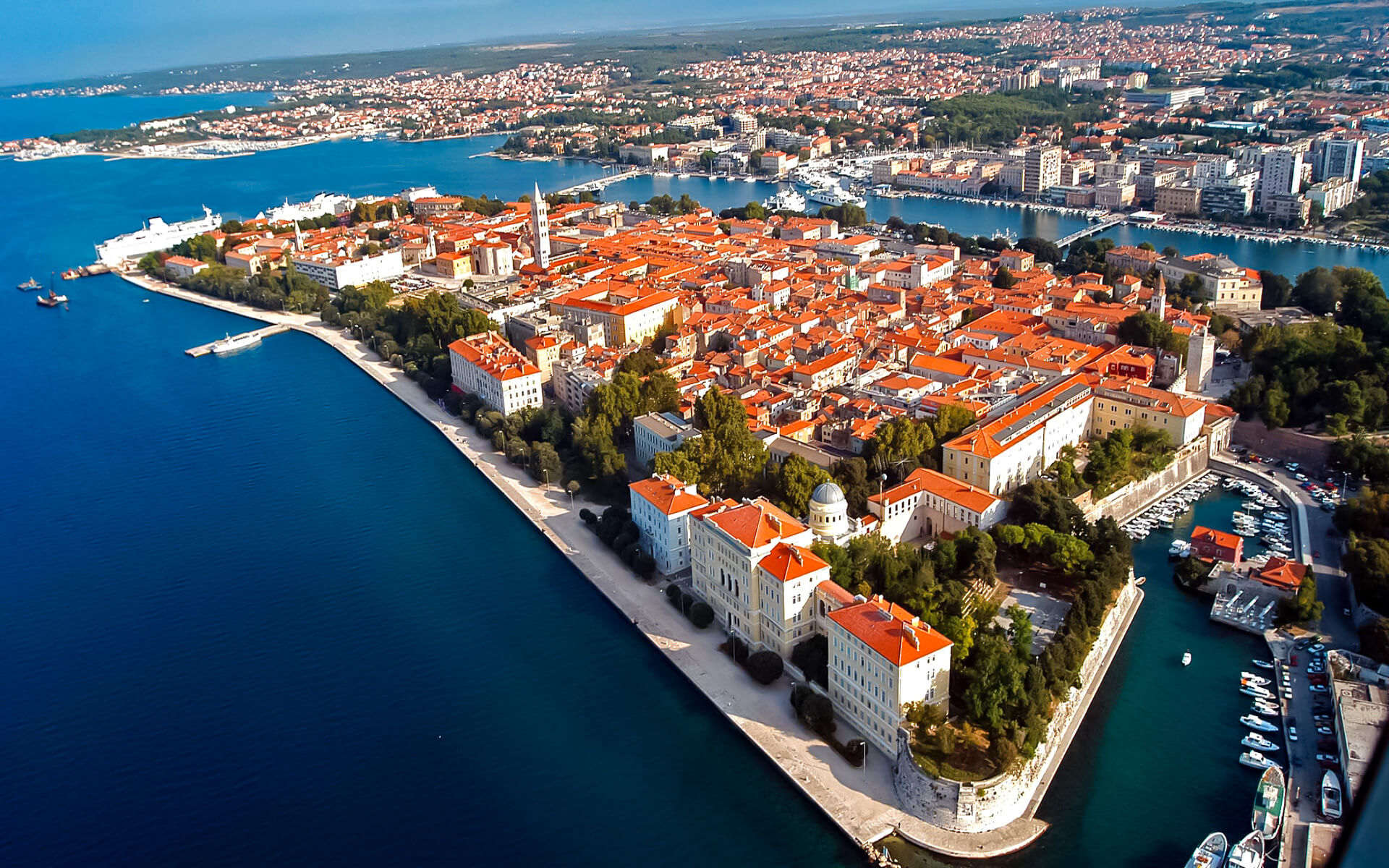The following are the most significant landmarks:
- Roman Forum – The biggest on the eastern side of the Adriatic, the Roman Forum was constructed by the first Roman Emperor Augustus, as two stone inscriptions from the 3rd century attest.
- Although most Roman relics were employed in the defenses, two squares are adorned with tall marble columns, a Roman tower rises on the town’s eastern side, and some remains of a Roman aqueduct can be seen beyond the walls.
- Church of St. Donatus – The Church of St. Donatus is a gigantic circular edifice in pre-Romanesque architecture from the 9th century, usually but incorrectly supposed to have been built on the site of a Juno temple. The huge dome of the rotunda is flanked by a vaulted gallery in two storeys that also continues around the three apses to the east, making it the most significant intact edifice of its era in Dalmatia. The treasury of the church houses some of the greatest Dalmatian metalwork, including Bishop Valaresso’s pastoral staff (1460).
- The greatest church in Dalmatia is St. Anastasia’s Cathedral (Croatian: Sv. Stoija), a Romanesque basilica erected in the 12th to 13th centuries (high Romanesque style).
- The churches of St. Chrysogonus and St. Simeon are also Romanesque architectural specimens. The latter holds the ark or reliquary of St. Simeon (1380), which was commissioned by Queen Elizabeth of Hungary and created in gilted silver by Francesco Antonio da Milano.
- St Chrysogonus’s Church – St Chrysogonus’ Church is a massive Romanesque church with elegant Romanesque ornamentation and proportions.
- St. Elijah’s Church (Croatian: Sv. Ilija) is a church dedicated to the prophet Elijah.
- St Francis’ Church is a Gothic-style church that was the location of the 1358 Zadar Peace Treaty signing. Several carved stalls, completed in 1394 by Venetian Giovanni di Giacomo da Borgo San Sepolcro, may be seen in the choir.
- Five Wells Square
- The Benedictine Convent of St Mary’s Church, which has a superb Romanesque campanile from 1105, was built in 1066 by a noblewoman of Zadar named Cika with The Permanent Ecclesiastical Art Exhibition “The Gold and Silver of Zadar.”
- The Citadel is a fortified structure. It was built in 1409 southwest of the Land gate and has remained unchanged since then.
- The Land Gate, designed by Venetian architect Michele Sanmicheli and completed in 1543.
- The unique sea organ
- The Great Arsenal
- The Loggia del Comune, which was reconstructed in 1565 and today houses a public library; the former priors’ palace, which is now the governor’s home; and the episcopal palaces are among the other notable structures.
Turistička zajednica Grada Zadara(Tourist Information Centre), Mihovila Klaića 1.
Zadar has a humid subtropical (Cfa) and Mediterranean (Csa) climate, since only one summer month receives less than 40 millimetres (1.6 in) of rainfall, preventing it from being classed as either humid subtropical or Mediterranean. Winters in Zadar are moderate and damp, while summers are hot and humid. The average annual rainfall exceeds 917 mm (36.10 in). The warmest months are July and August, with average high temperatures about 30 °C (86 °F) or 29 °C (84 °F). On July 22, 2015 and August 2, 1998, the hottest temperature ever recorded was 36.1 °C (97 °F). Temperatures may routinely reach above 30 °C (86 °F) during the summer months, but they can also hit 30 °C (86 °F) practically every year in spring and fall. Temperatures below 0 °C (32 °F) are uncommon and seldom last longer than a few days. The coldest month is January, with an average temperature of 7.7 °C (46 °F). The lowest temperature ever recorded in Zadar was 9.1 °C (16 °F) on January 23, 1963. Throughout July and August, the temperature never fell below 10 °C (50 °F). The wettest months are October and November, with total precipitation of roughly 114 mm (4.49 in) and 119 mm (4.69 in) respectively. July is the driest month, with just around 35 mm of rain (1.38 in). Winter is the wettest season, however it may rain at any time of year in Zadar. Snow is very uncommon, however it may occur in December, January, and February, and even less often in March. Zadar receives 1.4 days of snow on average every year, however it is more common that no snow falls. The water temperature ranges from 10 °C (50 °F) in February to 25 °C (77 °F) in July and August, although swimming is permitted from May through October, and occasionally even into November. The water temperature may plummet to 7 °C (45 °F) in February and reach 29 °C (84 °F) in July.
Zadar is bordered by the islands of Ugljan and Pašman, separated by the short Zadar Strait. The ancient city’s promontory was formerly divided from the mainland by a large moat, which has since been filled in. The port, located to the north-east of town, is secure and expansive.
Tourism, transportation, seaborne commerce, agriculture, fishing and fish farming operations, metal manufacturing and mechanical engineering sector, chemicals and nonmetal industry, and banking are all major businesses.


